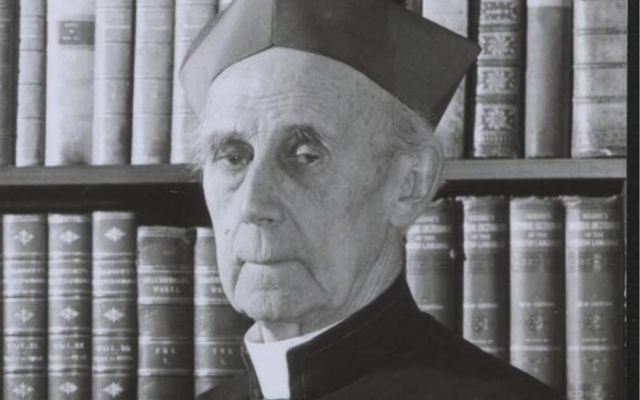Henry the 2nd is credited with saying “Will no one rid of me of this turbulent priest?”
The King was talking about Archbishop of Canterbury Thomas Becket, but Australian and British politicians could easily have said this about Archbishop Daniel Patrick Mannix, an Irish-born churchman who was a thorn in the side of both the Australian and British political establishment.
He served as the Archbishop of Melbourne from 1917 until his retirement in 1963. The undisputed leader of Australian Roman Catholics, he was one of the longest-serving Catholic bishops in the world at the time.
One of Mannix's defining features was his strong stance against British rule in Ireland during a time of political unrest and the struggle for Irish independence. He actively supported the Irish Home Rule movement and led the anti-conscription campaign during World War I, opposing the Australian government's efforts to introduce conscription for military service. His opposition to conscription was highly controversial and caused both admiration and criticism.
Mannix's outspoken nature and involvement in political issues often attracted controversy throughout his career. He was known for his fiery and persuasive speeches, which gathered large crowds and contributed to his popularity amongst Irish Catholic communities.
Daniel Patrick Mannix was born on the 4th of March 1864 in Charleville, Co Cork. His parents, devout tenant farmers Timothy and Eileen, instilled in him a deep faith and belief in social justice. He was educated at St. Patrick's College, Maynooth, and was ordained as a priest in 1890.
A very bright young man, he was not sent for pastoral duties but instead assigned as a tutor at Maynooth and he eventually became president of the college in 1903.
During his tenure, he welcomed both King Edward VII and George V to the college and his modernizing zeal transformed Maynooth into one of the best Roman Catholic seminaries in the world.
His work was not going unnoticed and as the growing flock of Irish emigrants in Australia needed pastoral and moral leadership in 1912, he accepted an appointment as coadjutor bishop of Melbourne, Australia, and was consecrated as a bishop in Rome.
Melbourne was the epicentre of Irish immigration and home to a growing number of Roman Catholics. Mannix was viewed with suspicion by politicians most of whom were Anglicans and Presbyterians for his advocacy for a separate Catholic school system. This was in a period where secular education was the norm.
In 1914 when Australia entered the Great War, Mannix was denounced by the very same politicians as a traitor when he called the conflict ‘just a sordid trade war.’
In 1916, he initially denounced the Easter Rising but his views changed as he was shocked at the brutality of the executions of the leaders of the rebellion. He would go on to become a staunch defender of Irish Nationalism.
Later that year, the turbulent priest burst onto the Australian national stage when he opposed conscription.
Mannix was the only Catholic bishop in Australia to oppose conscription openly, he emphasized that he was speaking as a mere citizen, not as a churchman. Catholics should make up their own minds, he said, and vote accordingly.
Conscription was defeated nationally by 51.6% to 48.4%. Victoria, where Melbourne is located, actually supported conscription by a very narrow margin, but the prime minister still sought to scapegoat Mannix for his national defeat in the referendum.
With his increased public profile in Australia, Mannix actively propelled the Irish struggle for independence into international politics on the opposite side of the globe.
In 1920, he led an Irish Republican funeral cortege through the streets of London to commemorate the death of Terence MacSwiney, the Lord Mayor of Cork who had died on hunger strike in Brixton Prison.
Later that year, he also shared a speaking platform with Éamon de Valera when Mannix visited the United States.
During his remaining tenure as Archbishop, Mannix focused on expanding Catholic education, building churches, and promoting social justice causes. He established numerous Catholic colleges, schools, and infrastructure in Melbourne. He also advocated for the rights of workers, particularly during the Great Depression, and supported the union movement.
He was vocal in supporting traditional values and opposing issues such as birth control and communism. He was involved in debates surrounding the formation of the Australian Constitution and the Dominion status of Australia.
Archbishop Mannix was a larger-than-life figure, renowned for his powerful oratory and strong personality. He remained a central figure in Melbourne until his death in 1963, often intervening on national issues and speaking on behalf of the Catholic community. His legacy continues to be a subject of controversy, with some viewing him as a champion of social justice, while others criticize the turbulent priest's robust approach to politics and other issues.
This article was submitted to the IrishCentral contributors network by a member of the global Irish community. To become an IrishCentral contributor click here.




Comments